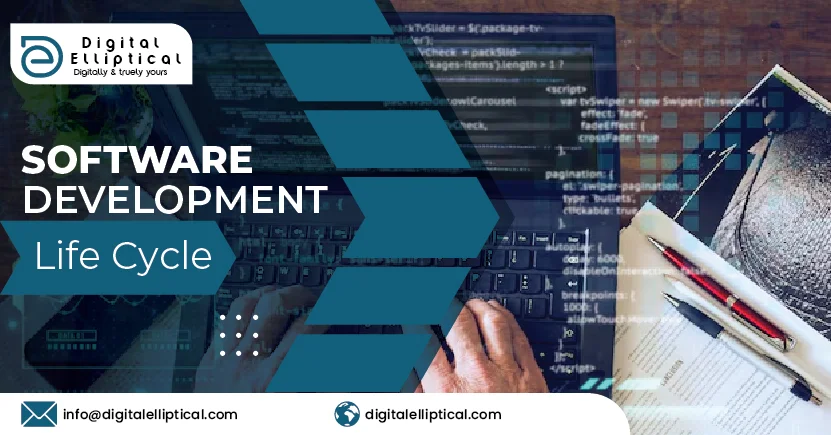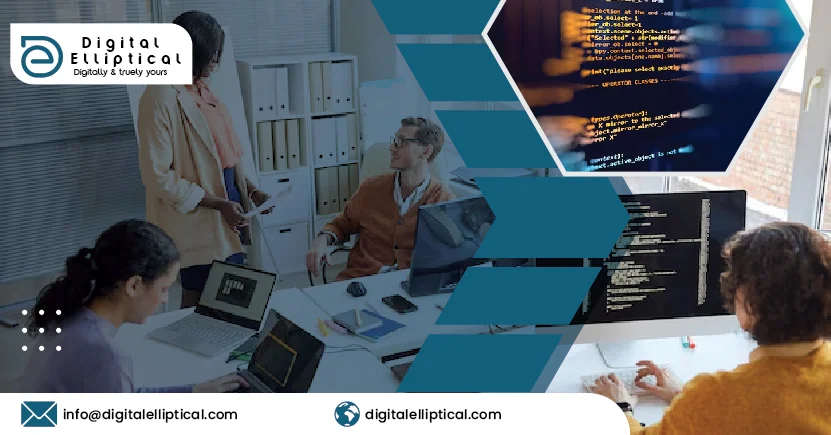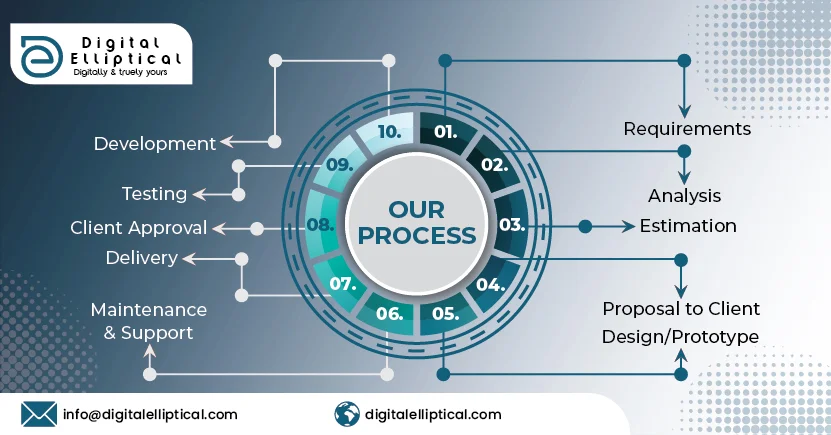Software Development Life Cycle (SDLC)
Software is created using a process called Software Development Life Cycle (SDLC) which is cost effective and systematic ; that is a lot of work done together by developers in order to achieve quality at an affordable cost. From start-ups to big businesses, everyone in software development companies has adopted it as an approach in developing products that would meet their customers’ needs as requested or demanded.
The Software Development Life Cycle (SDLC) includes various stages from one organization to another; in it lies the key to examining the whole of each different software development process for purposes of measurement and improvement
Let’s take a look at the roles of the SDLC:- providing a standardized framework that defines activities and deliverables
- helping with project planning, estimating, and scheduling
- making project tracking and control easier
- increasing visibility and speed of the development process
- minimizing project risks and the overall cost of production
While SDLC, just like any other kind of software development methodology, has certain pitfalls that could affect the final choice that customers make, the likely disadvantages of the
SDLC system could be summarized as follows:- unclear requirements and the lack of a detailed explanation
- increased time and costs
- high involvement of a customer
- large quantity of documentation
SDLC Process:
Once you go through the advantages and disadvantages of using SDLC, it becomes evident that this is the only approach that will help you have a good project. It is these characteristics which make SDLC be seen as one of the very best models for a software product’s successful launch
Different companies have different strategies of how to carry out a Software Development Cycle Process and the ones I have written above are only a few examples; there are others yet. For instance, if Digital Elliptical wants to do an SDLC project we have a list of about ten things which need to be followed in order for us to do it properly.
After thoroughly examining various software development life cycle modes, the following ten-level structure proves most helpful to us..
- Steps 1-5: These steps are all pre-contract which means we focus on identifying and understanding what we are going to do and we define the scope of the project with as much detail as possible to avoid errors and re-work. Before starting the development process, we want to make sure all pre-development steps are clearly understood.
- Steps 6-9: In the development phase, we focus on the development process itself. Our development process also includes approval from our client before delivering the final product.
- Step 10: The last step in our SDLC is the post-development step where we don’t simply deliver the project and let everything else on your shoulders but we support you all the way, we take care of maintenance and support.
During the first step of our software development life cycle, we specify all the requirements for the software project that are supposed to be developed and at the same time lay down the pillars on which our software is supposed to be built. This stage is very significant to our development team since we get to interact with our customers on their ideas about what they want the software product to be composed.
2. Step: AnalysisAt this step, we analyze all the materials in order to determine that which is doable. This involves looking at user personas as well as agreeing upon the product’s purpose. The project’s opportunities and risks will also be delved into during this phase by our team.
3. Step: EstimationEstimation is the third stage in our SDLC. A precise calculation in respect of the period of the project, as well as other things, is arrived at here. We find out how much time will be enough for us to accomplish these tasks in order not to disappoint the client in terms of quality.
4. Step: Proposal to ClientAfter the estimation of the project, we prepare a project proposal and submit it to a business customer for acceptance. The proposal outlines everything necessary to initiate a project. It describes the problem that will be solved and explains as a result the benefits to the customer.
5. Step: Design/PrototypeThis phase generates all design specifications for the project. Our development team is able to understand our goals better through this step. In some cases, they may entail screen mockups, database models, sketches, system interfaces, or product prototypes. The final sickle decisions are taken by the said specifics. That ends the pre-contract phase.
6. Step: DevelopmentOur team of developers is responsible for writing computerized instructions that turn ideas into products or services at a high level of detail so they can be understood by machines in step number six of the Software Development Life Cycle. This stage is quite thorough and may last for some time; therefore, it is essential having a schedule that will help you monitor their progress during development process, ie setting up deadlines for them against which they are expected to deliver key components required within stipulated timeframes." These timelines also facilitate monitoring completion percentages over periods with relatively stable completion rates among different parts of the computer program; nevertheless completion itself may differ across these segments as certain aspects such as testing may encroach upon production deadlines." It’s necessary sometimes that at this juncture, there will be integration already happening while checking on critical bugs takes place in some instances.
7. Step: TestingWe test the Beta Version B software so as to ascertain its functionality and success in performing the intended tasks. There are issues with user experience plus possible security vulnerabilities which may be resolved during the testing process.
8. Step: Client ApprovalOur clients must approve the final product before it is released to construct a seamless service provision and to ensure all the conditions agreed upon at project commencement are met. This is meant to maintain common ground with our clients, which will help in avoiding possible misunderstandings during the delivery of the final result. Consequently, this phase is usually run concurrently with development stages so that we may detect discrepancies as soon as possible. early and to make sure we keep on the right track.
9. Step: DeliveryWhen all the issues are closed and there are no more mistakes, the software is set for deployment. This stage involves releasing the final product to end-users so they can start making use of it.
10. Step: Maintenance & SupportIn the last step of our SDLC we focus on support and maintenance of our customers. After delivering a product, users may find bugs and errors that were missed in the testing phase, so we fix them for better user experience and help to resolve other technical issues that may appear. In some cases, these can lead to going back to the earlier steps of the software development life cycle.
Implementing the pre-contract steps to our SDLC is very important for us as it reduces risks and helps us deliver a great product that meets our customers’ needs. We put our methodical and detail-oriented work first which makes us proud to stand out from the others who just dive into the project without questioning or considering the risks and issues that can occur.
When deciding on what steps to implement in your software development life cycle it is important to consider the nature of your project. Not all projects need the same amount of steps or details. In some cases you need to be very specific, in others there is a lot of uncertainty - so make sure you partner with a trusted expert who can guide you through your specific case.
Conclusion
The system development life cycle(SDLC) is an intricate project management model that takes in system or software creation from the inception to final deployment and maintenance.
Also, when it comes to embracing different SDLC methodologies which include Waterfall, Agile or DevOps, it should be noted that teams can adjust well to rapid changes in requirements, market dynamics and technological advancement. This is through the selection of an appropriate methodology for a given project need and that which fits the company’s culture, and in doing so they will improve on their performance levels while at the same time becoming more innovative too.
From a human-centered perspective, you should always remember that SDLC is too big. It's more than merely typing some lines in an editor or running scripts; it’s being able to read what users want and offer real solutions as well as run companies on our own At first these ideas seem incompatible but in reality they are not. Just remember how important is real friendship with people! By prioritizing communication openness and customer orientation, project teams are invited to start their way to creating impactful software applications.




